Showing 281–290 of 322 results

This work presents a study of the twelve principal Upanisads, thus unfolding the spirit and substance of Upanishadic thought. It offers the text of the Upanisads in Devanagari and its translation in English along with detailed notes incorporating the commentaries of prominent spirit-ual thinkers and teachers including Sankaracarya and Sankarananda.
The Upanishads are perhaps one of the oldest philosophical treatises concerned with the mystery of the Absolute. This work (in three volumes) presents a study of the twelve principal Upanishads , thus unfolding the spirit and substance of Upanishadic thought. Written in a lucid style, it offers the text of the Upanishads in Devanagari and its translation in English along with detailed noted incorporating the commentaries of prominent spiritual thinkers and teachers including Shankaracarya and Shankaranand. The authors, scholars who have put in years of intense study on the subject, here offer a fresh approach and new insights into the philosophy of absolute unity as taught by the Upanishads and its quest for answers to abstruse questions like the origin of the universe, the nature of deity and the soul, and connection of mind and matter. The volumes are a must for scholars of Indian philosophy as well as students, and especially those genuine aspirants who wish to achieve moksha by the process of yoga for moksha is not possible without understanding the meaning of the Upanishads.
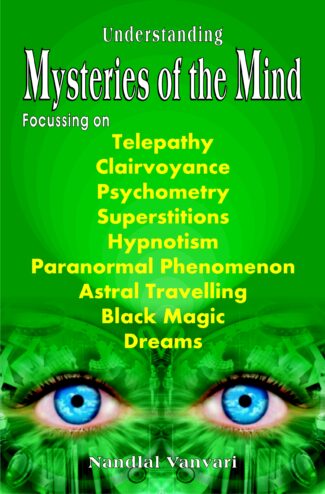
The book deals with the occult sciences that address the mysteries of the mind and attempt to understand the laws of nature and master them. Using perspectives of researchers and practitioners of these sciences, the book studies the basis and practice of telepathy, clairvoyance, psychometry, hypnotism, paranormal phenomenon, astral travelling and dreams.
The book deals with some of the occult sciences that attempt to address the mysteries of the mind and understand the laws of nature and master them. Using perspectives and ideas of researchers and practitioners of these sciences, the book, with an easy-to-follow text, studies the basis and practice of telepathy, clairvoyance, psychometry, hypnotism, paranormal phenomenon, astral traveling and dreams. Citing experiments conducted in the past and giving a history of the evolution of the practice of each discipline, it discusses the nature of these sciences and the relevance of each in promoting creativity and developing skills and spiritual and mental advancement in general. It goes in detail into what thought is and what specific thoughts, dreams and superstitions indicate and use of certain materials like ESP cards, mirrors and crystals in the practice of the occult sciences. The volume will prove indispensable to psychologists, psychiatrists and neurologists, practitioners of these sciences and lay readers interested in the subject.
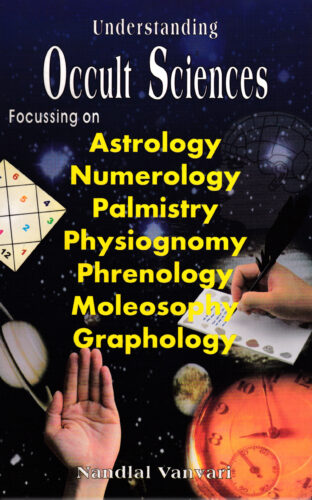
The book examines the occult sciences that deal with the birth- and name-related attributes of human beings, their bodily features and their style of writing astrology, numerology, palmistry, physiognomy, phrenology, moleosophy and graphology for deeper insights into personality and fate. With easy-to-understand examples, it reveals the way in which these sciences explain aspects of human character and mind.
The book attempts to examine those occult sciences that deal with the birth- and name-related attributes of human beings, their bodily features and their style of writing for deeper insights into personality and fate topics like astrology, numerology, palmistry, physiognomy, phrenology, moleosophy and graphology. In a simple language and with easy-to-understand examples and illustrations, Dr. Nandlal Vanvari reveals the way in which these sciences explain aspects of human character and mind by going beyond the environmental conditioning of man and his trait of reducing everything to automatic reflex. Keeping the modern scientific perspective in mind throughout, he delves into horoscopes and effects of the planets and constellations, the significance of numbers in numerology and their association with planets, the palm lines, significance of moles located in different parts of the body and so on. The work will be useful for those associated with the sciences of the mind as well as general readers interested in occult sciences.
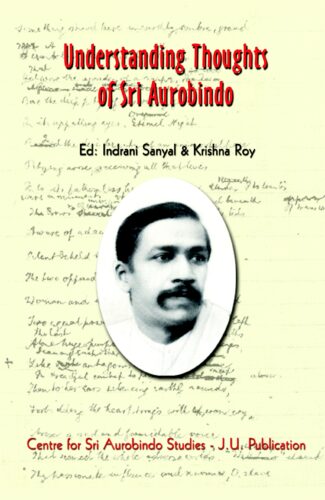
This volume explores various dimensions of thoughts of Sri Aurobindo (1872-1950), respected as a patriot, nationalist, social reformer, educationist, historian, poet, visionary, Yoga and a philosopher. He interprets Indian philosophical and spiritual tradition dating back to the Vedas and the Upanishads and emphasises National Education, in cultural and spiritual sense.
Understanding Thoughts of Sri Aurobindo explores various dimensions of thoughts of Sri Aurobindo (18721950) who is being respected as a patriot, nationalist, social reformer, educationist, historian, poet, visionary, Yogi and philosopher. Sri Aurobindo is the interpreter of the Indian philosophical and spiritual tradition and one of the ablest exponents of this tradition dating back to the Vedas and the Upanishads. Sri Aurobindo’s emphasis on National Education, more in the cultural and spiritual sense, may provide an answer to the intellectual, moral and spiritual crisis. This volume focuses upon the holistic, interdisciplinary approach to the thoughts of Sri Aurobindo, whose views and actions have left a lasting influence on the development of modern India. Referring to his three major works, The Life Divine, The Synthesis of Yoga and Savitri, as well as over thirty other works where he expounded his thoughts, the well-researched writings reveal the special features of his vision. They focus on his integral approach to the concept of evolution, his notion of integral philosophy and his concept of integral Yoga. The essays include an in-depth study of Sri Aurobindo’s concept of man, of state, and views regarding uplift of humanity. This book contains scholarly articles that seek to unravel the many dimensions of his thoughts. Students, researchers and persons interested in Sri Aurobindo Studies will be immensely benefited from this volume.
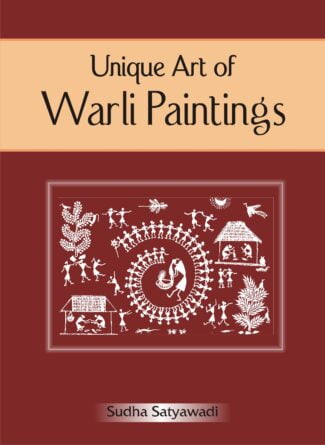
This book is a modest compilation of Warli art Þ of the Warli tribes of Maharashtra Þ that comes through an unbroken tradition of thousands of years. Warli art is simple yet rich. The paintings are expressive with profound truths which are brought forth in a most elementary format.
Warli painting has its own place in adivasi art of India. It takes its name from the Warli tribes of Maharashtra. It seems their roots are in the rock shelters of ancestors found in Bhimbhedka and Raisen in Madhya Pradesh.
Warli paintings are pointers they fulfil a purpose. Their presence in the hut is auspicious and is said to promote fertility, avert disease, propitiate the dead, etc. They show rituals at birth, marriage, a life full of dance and music, livelihood, connectivity with death and life after death. Artists express a kind of fulfilment they experience that is in harmony with nature and their gods and goddesses.
Warli art is simple yet rich. The material used for painting is simple, themes contained therein, philosophy of existence and even life beyond death, all are brought forth in a most elementary format. Many specimens of Warli art are contained in this book. The paintings are expressive with profound truths and project all that one needs to know how to live a happy life. Austere brown wall surface of huts displaying tribal designs with typical rock art motifs make Warli art different from other tribal paintings of India.
This book is a modest compilation of Warli art that comes through an unbroken tradition of thousands of years. But Warli art traditions are gradually vanishing. Money elsewhere is pulling artists away from their traditional occupation. Something has to be done by society to create conditions for them, to not get weaned away by lure of commercial avenues. This book is a small effort to save this art from falling off from the pathway of time continuum.

This work is an attempt to reveal the fundamentals of Carvaka philosophy the materialistic system of thought propounded by the ancient philosophers of India and its epistemological, metaphysical and ethical concerns. The Carvaka system is compared and contrasted with other systems of ancient philosophy.
Carvaka is the materialistic system of thought propounded by the ancient philosophers of India. The Carvaka system of philosophy has been much criticized and even ridiculed since the ancient times as the Carvakas have been dubbed as atheists and hedonists. This work is an attempt to reveal the fundamentals of Carvaka philosophy, and its epistemological, metaphysical and ethical concerns. Beginning with the origin and development of Indian materialism, it addresses the controversial and disputed issues regarding Carvaka philosophy on the basis of a profound study of the original sources on the subject and by referring to modern researches on it. It highlights the contributions of the Carvakas in the furtherance of moral and philosophical thoughts and their uniqueness in many respects, such as the Carvaka School being the only one among ancient Indian philosophical schools to accept only one pramana — perception. The Carvaka system is compared and contrasted with other systems of ancient Indian philosophy for the purpose. The book is praiseworthy in its attempt to present its findings in a logical manner.
The book will interest scholars and students of ancient Indian philosophy as well as general readers who are keen to understand ancient Indian philosophy.

Studying the meaning and significance of Sri Visnu Sahasranama, the book discuss the metaphysical nuances of each name, related concepts/terms and the origin of the sacred hymn. It shows how the text presents a picturesque account of the Supreme Reality.
The book offers an erudite commentary on the sacred text of Shri Vishnu Sahasranama, one of the most important hymns in the great corpse of Indian literature. Dr. Panduranga Rao, a scholar of repute, here makes a detailed study of the meaning and significance of the hymn a garland of thousand names of the Lord of the universe glorifying his qualities in an attempt to qualify the unqualified. Devoting a separate chapter for the analysis of each of the 107 verses of the stotra, he brings out the metaphysical nuances of each name with references from various sources and mentions the texts where the names occur. He explains related concepts and terms in an effort to present a wider understanding of the subject. He also studies the context in which the sacred hymn originated. The scholarly commentary reveals how the sacred text presents a picturesque account of the Supreme reality, Highest existence and Absolute bliss through graphic language and by adopting a photographic style of its own. The work, with a foreword by Dr. Karan Singh, will be extremely useful to all scholars of Indian tradition and literature as well as others who are interested in the recitation and understanding of Shri Vishnu Sahasranama.
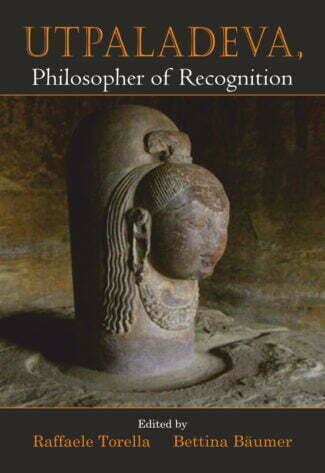
This volume presents the multifarious aspects of Utpaladeva, not only an outstanding metaphysician and epistemologist, engaged in a strenuous critical dialogue above all with the Buddhist logicians, but also one of the most extraordinary mystical poets of India. For the first time his contribution to poetics and aesthetics has been duly highlighted.
The book, which partly derives from the papers offered at the first International Seminar on Utpaladeva (IIAS, Shimla 2013), is the first ever attempt at presenting a comprehensive portrait of one of the most important philosophers of premodern India, so far mainly taken into account as a mere predecessor of the great Abhinavagupta. Recent studies by R. Torella and others have shown the central importance of Utpaladeva in the elaboration of the Pratyabhijna philosophy, and reduced the role of Abhinavagupta to that of his brilliant commentator.
The contributors to the present volume have shown the multifarious aspects of Utpaladeva, not only an outstanding metaphysician and epistemologist, engaged in a strenuous critical dialogue above all with the Buddhist logicians, but also one of the most extraordinary mystical poets of India. For the first time his contribution to poetics and aesthetics has been duly highlighted.
The book contains two appendices with the critical edition and translation by R. Torella of fragments from Utpaladevas long commentary (Vivriti) on his Ishvarapratyabhijna-karika and Vritti, one of the most important works of Indian philosophy as a whole, so far deemed to be totally lost.
This book should generate great interest among scholars of Sanskrit and philosophy for its uniqueness and should serve the curiosity of each and every scholarly reader of Kashmir Shaivism.
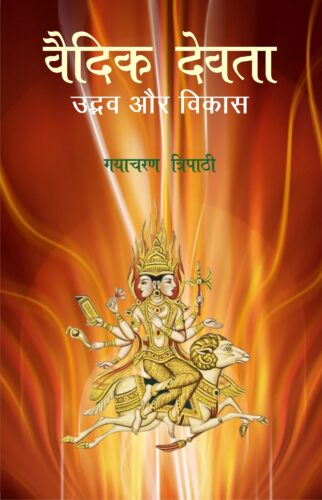
Present book presents interesting and authentic details of almost all promient Vedic gods, about their conceptions, their most ancient forms, their orderly evolution, and about their evolved personalities.
There have been quite a few attempts to delineate the nature and character of Vedic Deities on the basis of Vedic Samhitas by European scholars like Macdonell, Hillebrandt, Oldenberg, Luders and, of late, by Oberlies, etc. However, none of these scholars has made attempt to trace the subsequent development of their character and personalities through the later Vedic texts, epics and the Puranas, etc., whereas it goes without saying that the concept of Hindu gods today in the minds of the people is exactly the one which we encounter in the Puranas and in the folk literature.
This obviously means that the personalities of the Vedic Deities did not freeze with the end of Vedic literature but continued to develop in later period as well through the subsequent literarary activities. Taking rather vague clues from the Vedic texts, the authors or narrators of the Puràõas, augmented and supported by folk beliefs, further expanded, modified and developed the personalities of these gods so that, for the most part, the intangible character of these gods acquired a concrete shape and form, a body of flesh and blood, so to say.
The book tries to trace the historical development of the personalities of Vedic Deities through the subsequent Vedic literature, as well as the epics and the Puranas till they acquire the shape and form in which they are conceived and venerated today.
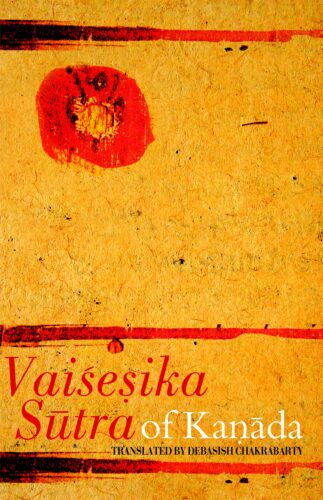
This book presents a lucid English translation of the Vaisesika-Sutra of Kanada, termed the earliest exposition on physics in Indian philosophy and the textual basis for the Nyaya-Vaisesika and Navya-Nyaya systems of thought. The translation retains the feel of the original sutras even while conveying the intended meaning accurately and with clarity.
Kanadas Vaisesika Sutra, the textual basis for the Nyaya-Vaisesika system and the later Navya-Nyaya system, may be termed the earliest exposition on physics in Indian philosophy. It presents one of the earliest discussions on the idea of atomicity and on the true nature of knowledge as comprising the categories of dravya (substance), guna (attribute), karma (action), samanya (generality), visesa (particularity) samavaya (inherence) and abhava (non-existence). This book presents the original Sanskrit text of the Vaisesika Sutra along with its Roman transliteration and a translation in the English language. The lucid translation is a scholarly attempt to retain the feel of the original sutras while conveying the intended meaning accurately and is easy to comprehend owing to many special features. Additional words are added in the translated text for the benefit of syntax but they are placed in parenthesis. The translated text has sub-titles that aid in simplifying the arguments by grouping the sutras. Besides, footnotes are provided to explain technical terms and concepts in the original Sanskrit. The book, published under the Shastra Group of Centre of Linguistic and English at Jawaharlal Nehru University which had earlier brought out the Yogasatra of Patanjali, will prove useful to all researchers and students of ancient Indian philosophy.
| There are no products |